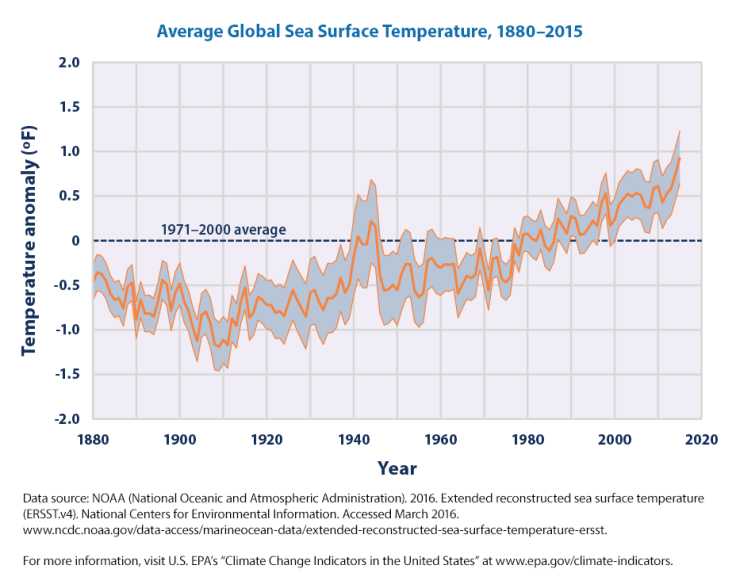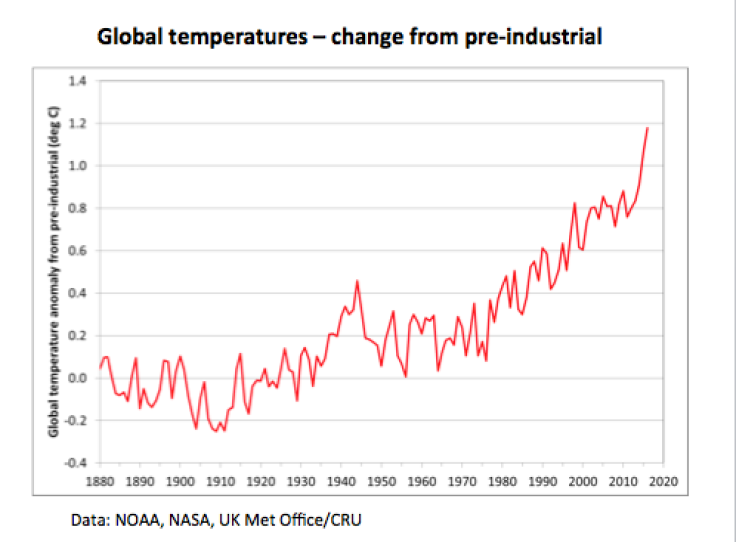Climate Change: House Science Committee Retweets Breitbart Article Mocking Global Warming ‘Alarmists’

On Wednesday, the far-right news website Breitbart — whose ex-CEO Steve Bannon is now President-elect Donald Trump’s chief strategist — published an article lambasting climate change “alarmists” in the “mainstream media.”
A few hours later, the House of Representatives Committee on Science, Space and Technology — chaired by the outspoken climate change denier U.S. Representative Lamar Smith (R-Texas) — retweeted the article.
.@BreitbartNews: Global Temperatures Plunge. Icy Silence from Climate Alarmists https://t.co/uLUPW4o93V
— Sci, Space, & Tech GOP (@housesciencegop) December 1, 2016
“Icy Silence from Climate Alarmists,” the retweet, quoting from the headline of the Breitbart article — itself a rehash of a story published last week by Daily Mail — said.
However it was quickly pointed out that the assertions made in the Daily Mail and Breitbart articles, which cite this NASA-funded study published on Nov. 22, were largely unscientific and misleading. Many scientists and journalists also argued that the House Science Committee — whose chairman, Smith, recently defended ExxonMobil during an investigation into its holdings by the Securities and Exchange Commission — was tacitly endorsing climate change denial.
Where'd you get your PhD? Trump University? https://t.co/P5Ez5fVEwD
— Bernie Sanders (@SenSanders) December 1, 2016
“It’s so, so wrong for so many reasons, mainly that greenhouse gas emissions and naturally occurring climate cycles like El Niño aren't mutually exclusive possible causes of longer term global warming; rather, they can and do interact/co-occur,” Karen James, a staff scientist at the Mount Desert Island Biological Laboratory in Maine, wrote in a Facebook post. “I feel very sorry for the climate scientists and agencies whose work was twisted… no, mutilated both in this and in the Daily Mail article it cites as a source.”
In the article, Breitbart states: “Thanks what’s now recognised as an unusually strong El Nino, global temperatures were driven to sufficiently high levels to revive the alarmist narrative – after an unhelpful pause period of nearly 20 years – that the world had got hotter than ever before.”
The Daily Mail article, which cites “NASA satellite measurements of the lower atmosphere,” also posits that global land temperatures have plummeted since the middle of this year in the wake of a powerful El Niño event of 2015-16.
“It is almost certain that next year, large falls will also be measured over the oceans, and by weather station thermometers on the surface of the planet – exactly as happened after the end of the last very strong El Nino in 1998. If so, some experts will be forced to eat their words,” Daily Mail’s David Rose wrote.
However, the fall in global land temperature is something that is in line with what happens when an El Niño event transitions to La Niña, and this drop, as the most recent data from the U.S. National Oceanic and Atmospheric Administration shows, is far from the "biggest and steepest" ever recorded.

Moreover, the “pause,” or the “hiatus,” in global warming between 1998 and 2013 mentioned in the articles never actually happened in the strictest sense of the word. Even the authors of the study cited by the two publications recently suggested replacing the term “global warming hiatus” with “global surface warming slowdown” to eliminate misinterpretation.
“This terminology more accurately describes the slowdown in global mean surface temperature rise in the late 20th century,” the study’s lead author, Xiao-Hai Yan of the University of Delaware, Newark, said in a statement.
The authors argue that even the temporary slowdown in the global mean surface temperature (GSTM) warming trend in this period was a “redistribution” of energy within the Earth's system, with oceans absorbing the extra heat.
As a result of this redistribution, the average global sea surface temperature today is higher than it has ever been since observations began in 1880. This, in turn, has resulted in 15 of the 16 warmest years on record to occur in this century — the sole outlier being 1998, when a strong El Niño raised the planet’s temperature 0.63 degrees Celsius above the 20th century average.

“Arguably, ocean heat content — from the surface to the seafloor — might be a more appropriate measure of how much our planet is warming,” the researchers wrote in the study.
The overwhelming scientific consensus currently is that climate change is real, and that humans are its leading cause. Preliminary estimates indicate that this year, the global average temperature may be up to 1.2 degrees Celsius higher than pre-industrial levels — bringing the planet perilously close to breaching the Paris climate agreement’s perhaps unrealistic target of limiting the rise to 2 degrees Celsius. The accord, which Trump, during his campaign, said he would “cancel,” also speaks of the aspiration to keep the rise within 1.5 degrees Celsius.

“Scientists have more confidence now that Earth’s ocean has continued to warm continuously through time,” study co-author Veronica Nieves from NASA’s Jet Propulsion Laboratory and the University of California, Los Angeles, said in a statement. “But the rate of global surface warming can fluctuate due to natural variations in the climate system over periods of a decade or so.”
© Copyright IBTimes 2024. All rights reserved.












